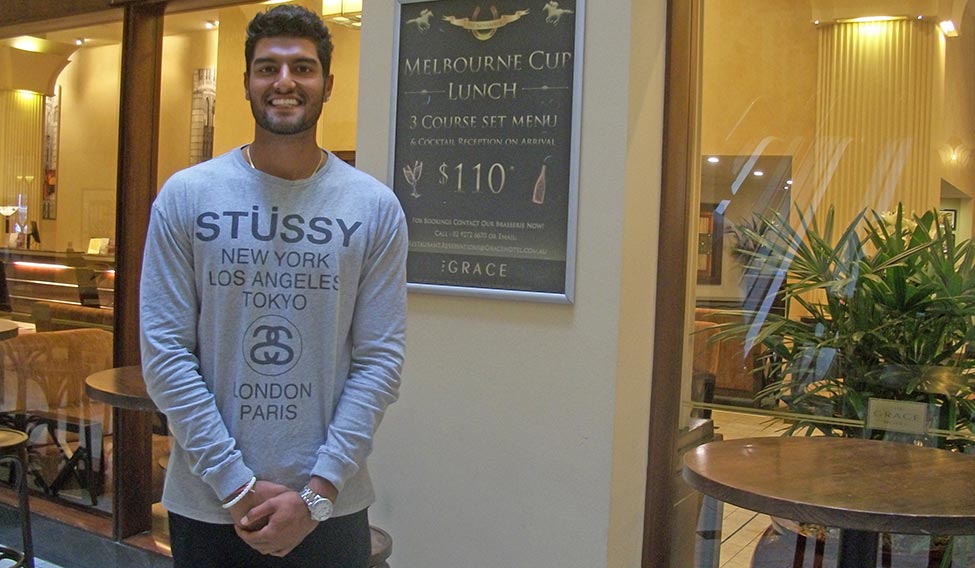Gurinder Sandhu, 23, has played only a couple of ODIs and is yet to don the baggy green (Test cap). However, as the first man of Indian-origin to play for the Australian ODI team (former pacer Stuart Clark had Anglo-Indian parents), he has become one of the faces of a nascent multicultural shift in Australian cricket and a role model to emerging players of Indian origin. The tall lad, who speaks Punjabi and does bhangra, talks to THE WEEK about his journey, goals and the changing world of cricket. Excerpts:
How did you start playing?
I was playing backyard cricket with my dad and my brother. Every Australian kid plays backyard cricket and, when I got older, I started playing for my local club at the under 13, under 14 and under 15 levels.
You used to deliver pizza?
Haha, yeah. I was about 18 and it was for a local shop near my house. I would do it about twice a week and it gave me pocket money on the side to buy some clothes.
What do you think about the Australian cricketing system?
The system is very good. All ages have the opportunity to represent the states in different age groups. But, if you don’t make that team, you can still play grade cricket [senior inter-club or inter-district competitions]. And if you do well, you can climb up the ranks. So, there are different avenues that players can take. For instance, Doug Bollinger [fast bowler] started playing quite late, so it doesn’t matter where you start as long as you put in the hard work.
Do you think cricket, especially Test cricket, is losing its charm and, if so, is Twenty20 the only way forward? Do you think day-night Tests will help?
No, I don’t think so. But, yeah, for someone who doesn’t know a lot about cricket, it can seem as if not a lot is happening in Test matches. Twenty20 is definitely a hook. It’s almost like a party with the big hits, the music and the dancers. Someone who is new to cricket can watch a Twenty20 to get interested and can then move on to the intricacies of Test cricket. Day-night Test matches can help, especially as many people would have finished work for the day and would like to catch the game at the stadium or with family at home.
How often do you come back to India? Do you speak any Punjabi or Hindi?
I speak Punjabi and a little bit of Hindi. I was in India for the Indian Premier League and with the Australia A side. But, I don’t get to go back on personal trips a lot.
How was the IPL experience?
It was a learning experience. I got to play a few games for the Delhi Daredevils and rubbed shoulders with the likes of Zaheer Khan and J.P. Duminy. I was welcomed warmly and spoke in Hindi with the boys. It was a great opportunity to improve my game and, when I return, I’ll know what to do.
You played your first ODI against India.
Yes, in Melbourne. With all the crowd support, it was almost like a home game for India. But, in a way, that was good for me, too [laughs].
With players like you, Usman Khawaja and Moises Henriques coming in, do you think the Australian team is becoming more multicultural?
With all those names, and Fawad [Ahmed] coming in, it adds a special set of skills to the team. Moises, for instance, is from Portugal, which no one associates with cricket. They all bring different aspects to the table and it is definitely good for the team.
What is your end goal?
To get the baggy green. I know it will probably take some time as I have to work on some areas of my game, but that’s the ultimate goal.






